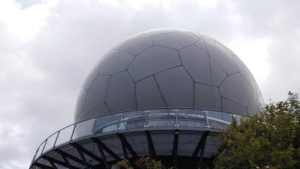Engineering and Technology Updates
IIT Delhi Researchers Develop AI Models for Instantaneous Quality Check of Cement
 Concrete, comprising over 90% of the world’s-built environment, is the most used construction material globally. Cement, the key ingredient of concrete, is a critical industrial product that supports millions of jobs, drives urban development, and enables low-cost housing. Globally, the cement industry ranks among the largest industrial sectors, with India being the second-largest producer. However, cement is one of the most carbon-intensive industries, contributing ~8% of the global carbon footprint. For context, producing just 1 tonne of cement—enough for a concrete staircase of a single floor—releases ~0.66 tonnes of CO₂, equivalent to driving a petrol car from Paris to Istanbul! With over 4.1 billion tonnes produced annually, and demand continuing to rise, advanced quality control is more urgent than ever. Traditionally, cement quality is assessed by passing high-energy X-rays through clinker (partly- processed cement lumps). This process takes hours, causing delays that often lead to material waste and energy-intensive reprocessing when defective clinkers are found. Addressing this challenge, Mr. Sheikh Junaid Fayaz, a PhD scholar under the supervision of Prof. N.M. Anoop Krishnan in the Civil Engineering Department at IIT Delhi, led the development of AI models that can predict clinker quality in fractions of a second. Not just ultra-fast, these models achieve ~88% lower errors compared to previously reported industrial-scale models, setting a new state-of-the-art benchmark. “X-ray-based clinker checks can take up to 4 hours, while our AI models can predict clinker quality in just 1/100 of a second—making quality control a million times faster,” said Prof. N. M. Anoop Krishnan. “This real-time accuracy allows engineers to adjust plant parameters proactively, ensuring the target quality is met before production, rather than reacting to delayed X-ray analysis.” “The work’s significance extends beyond cement manufacturing as it demonstrates how AI can transform traditional industrial practices and advance sustainability goals”, added Mr. Sheikh Junaid Fayaz. “Given the success of our models, several cement plants worldwide have expressed interest in adopting similar systems. We hope this paves the way for more AI applications in the industry.”
Concrete, comprising over 90% of the world’s-built environment, is the most used construction material globally. Cement, the key ingredient of concrete, is a critical industrial product that supports millions of jobs, drives urban development, and enables low-cost housing. Globally, the cement industry ranks among the largest industrial sectors, with India being the second-largest producer. However, cement is one of the most carbon-intensive industries, contributing ~8% of the global carbon footprint. For context, producing just 1 tonne of cement—enough for a concrete staircase of a single floor—releases ~0.66 tonnes of CO₂, equivalent to driving a petrol car from Paris to Istanbul! With over 4.1 billion tonnes produced annually, and demand continuing to rise, advanced quality control is more urgent than ever. Traditionally, cement quality is assessed by passing high-energy X-rays through clinker (partly- processed cement lumps). This process takes hours, causing delays that often lead to material waste and energy-intensive reprocessing when defective clinkers are found. Addressing this challenge, Mr. Sheikh Junaid Fayaz, a PhD scholar under the supervision of Prof. N.M. Anoop Krishnan in the Civil Engineering Department at IIT Delhi, led the development of AI models that can predict clinker quality in fractions of a second. Not just ultra-fast, these models achieve ~88% lower errors compared to previously reported industrial-scale models, setting a new state-of-the-art benchmark. “X-ray-based clinker checks can take up to 4 hours, while our AI models can predict clinker quality in just 1/100 of a second—making quality control a million times faster,” said Prof. N. M. Anoop Krishnan. “This real-time accuracy allows engineers to adjust plant parameters proactively, ensuring the target quality is met before production, rather than reacting to delayed X-ray analysis.” “The work’s significance extends beyond cement manufacturing as it demonstrates how AI can transform traditional industrial practices and advance sustainability goals”, added Mr. Sheikh Junaid Fayaz. “Given the success of our models, several cement plants worldwide have expressed interest in adopting similar systems. We hope this paves the way for more AI applications in the industry.”
Source: https://home.iitd.ac.in/show.php?id=74&in_sections=Research
Stanford’s tiny eye chip helps the blind see again
A tiny wireless chip placed at the back of the eye, combined with a pair of advanced smart glasses, has partially restored vision to people suffering from an advanced form of age-related macular degeneration. In a clinical study led by Stanford Medicine and international collaborators, 27 of the 32 participants regained the ability to read within a year of receiving the implant. With the help of digital features such as adjustable zoom and enhanced contrast, some participants achieved visual sharpness comparable to 20/42 vision. The implant, named PRIMA and developed at Stanford Medicine, is the first prosthetic eye device to restore usable vision to individuals with otherwise untreatable vision loss. The technology enables patients to recognize shapes and patterns, a level of vision known as form vision. The system includes two main parts: a small camera attached to a pair of glasses and a wireless chip implanted in the retina. The camera captures visual information and projects it through infrared light to the implant, which converts it into electrical signals. These signals substitute for the damaged photoreceptors that normally detect light and send visual data to the brain. The PRIMA project represents decades of scientific effort, involving numerous prototypes, animal testing, and an initial human trial.Participants in the latest trial had an advanced stage of age-related macular degeneration known as geographic atrophy, which progressively destroys central vision. This condition affects over 5 million people worldwide and is the leading cause of irreversible blindness among older adults. In macular degeneration, the light-sensitive photoreceptor cells in the central retina deteriorate, leaving only limited peripheral vision. However, many of the retinal neurons that process visual information remain intact, and PRIMA capitalizes on these surviving structures. The implant, measuring just 2 by 2 millimeters, is placed in the area of the retina where photoreceptors have been lost. Unlike natural photoreceptors that respond to visible light, the chip detects infrared light emitted from the glasses. Since the implant is photovoltaic — relying solely on light to generate electrical current — it operates wirelessly and can be safely placed beneath the retina. Earlier versions of artificial eye devices required external power sources and cables that extended outside the eye. The new trial included 38 patients older than 60 who had geographic atrophy due to age-related macular degeneration and worse than 20/320 vision in at least one eye. Four to five weeks after implantation of the chip in one eye, patients began using the glasses. Though some patients could make out patterns immediately, all patients’ visual acuity improved over months of training. On average, participants’ visual acuity improved by 5 lines; one improved by 12 lines. The participants used the prosthesis in their daily lives to read books, food labels and subway signs. The glasses allowed them to adjust contrast and brightness and magnify up to 12 times. Two-thirds reported medium to high user satisfaction with the device. Nineteen participants experienced side effects, including ocular hypertension (high pressure in the eye), tears in the peripheral retina and subretinal hemorrhage (blood collecting under the retina). None were life-threatening, and almost all resolved within two months. Future Visions A chip with 20-micron pixels could give a patient 20/80 vision, the lead researcher said. “But with electronic zoom, they could get close to 20/20.”
Source: https://www.sciencedaily.com/releases/2025/10/251022023118.htm
Scientists 3D-print materials that stop vibrations cold
Researchers from the University of Michigan and the Air Force Research Laboratory (AFRL) have demonstrated a way to 3D print intricate tubular structures whose unique internal geometry allows them to suppress vibrations in ways never seen in natural materials. These creations belong to a class known as mechanical metamaterials — engineered substances with properties that come entirely from their design rather than their composition. The ability to block or reduce vibrations could be valuable across many industries, from transportation to construction and beyond. The team’s findings build on decades of theory and computer modeling to produce real-world structures that can passively disrupt vibrations traveling through them. The study brings together classical structural engineering, modern physics, and cutting-edge manufacturing tools such as 3D printing. With technologies like 3D printing, scientists can now replicate and enhance that natural design principle in metals, polymers, and other substances to achieve effects that were previously out of reach. Another key concept behind the new study emerged in the latter half of the 20th century, as physicists found that interesting and perplexing behaviours emerged near the edges and boundaries of materials. This led to a new field of study, known as topology, that’s still very active and working to explain these behaviours and to help capitalize on them in the real world. The team has built up a model explaining that behaviour and how to design a real object that would exhibit it. The team has now proved that its model is at its most advanced stage yet by actually making such objects with 3D printed nylon. A cursory look at the structures reveals why making them previously was such a challenge. They resemble a chain-link fence that’s been folded over and rolled up into a tube with a connected inner and outer layer. Physicists call these kagome tubes, a reference to traditional Japanese basket weaving that used similar patterns. The study also showed that the better a structure is at suppressing vibrations, the less weight it can support. That is a costly, potentially even unacceptable, tradeoff in terms of applications, but it highlights interesting opportunities and questions that remain at a fundamental level.
Source: https://www.sciencedaily.com/releases/2025/10/251016223106.htm
IIT Guwahati Develops Fluoride Removal System that treats 1000 Liters Water for Rs. 20 Rupees
Indian Institute of Technology Guwahati researchers have developed a community scale water treatment system that removes fluoride and Iron from groundwater. The efficient system can treat up to 20,000 liters of contaminated water per day, offering a low-cost solution for areas with poor access to safe drinking water. Fluoride, a mineral generally used in dental care products, pesticides, fertilizers, and some industrial processes, can enter groundwater either naturally or through human activities such as agriculture and manufacturing. Consumption of water with excess fluoride presence can lead to skeletal-fluorosis, a serious health condition in which bones harden and joints become stiff, making physical movement difficult and painful. In India, states including Rajasthan, Telangana, Andhra Pradesh, Karnataka, Haryana, and Gujarat, among others, face high levels of fluoride in groundwater. The IIT Guwahati research team developed a 4-step system that ensures a cost-effective and energy-efficient technology for contaminated water treatment. In this, the contaminated water goes through the process of – Aeration – which starts with a specifically designed aerator that adds oxygen to the water, helping remove dissolved iron; Electrocoagulation – the water then moves into the electrocoagulation unit, where a mild electric current passes through aluminum electrodes. This process releases charged metal particles (ions) that attract and bind with contaminants. Flocculation and setting – in this process, the charged ions bound with contaminants form large clumps. These clumps are thickened in the flocculation chamber and allowed to settle. Filtration – after settling of the aggregations, the water passes through a multi-layer filter made of coal, sand, and gravel to remove remaining impurities. The research team tested the developed system under real-world conditions for 12 weeks and recorded consistent performance. The results have shown removal of 94% iron and 89% fluoride from the wastewater, bringing the levels within safe limits set by Indian standards. A key feature of the developed system is its cost effectiveness, with Rs. 20 per 1000 liters of treated water, making it highly affordable.
BHEL to Manufacture Advanced Fused Silica Radar Domes Under DRDO Technology Transfer

DRDO Transfers Radar Dome Technology to BHEL for Indigenous Manufacturing
BHEL will manufacture fused silica radar domes using DRDO technology, boosting domestic defence electronics production and reducing dependence on critical imports. Bharat Heavy Electricals Ltd (BHEL) has signed a technology transfer licence agreement with the Defence Metallurgical Research Laboratory (DMRL), Hyderabad, a leading Defence Research and Development Organisation (DRDO) facility. The agreement enables BHEL to manufacture fused silica radar domes using the cold isostatic pressing and sintering process. These domes serve as high-precision electronic enclosures for seeker-based missile guidance systems, protecting sensitive sensors while ensuring undistorted electromagnetic signal transmission. By localising production of radar domes, the move directly supports the nation’s goal of self-reliance in defence manufacturing and aims to reduce reliance on imports for these high-frequency electronic components. DMRL, known for its expertise in advanced ceramics and high-temperature alloys, has transferred the know-how to BHEL, ensuring that the manufacturing process adheres to global standards. For the electronics industry, the use of fused silica ceramics in radar domes highlights the increasing role of advanced materials in next-generation defence systems.
IIT Madras signs deal to license India’s First Silicon Photonics-Based Quantum Random Number Generator to Industry
Indian Institute of Technology Madras (IIT Madras) has indigenously developed and licensed to the industry India’s first Silicon Photonics-Based high-speed Quantum Random Number Generator (QRNG) in a deal worth Rs. 1 Crore. The Technology Transfer Office (TTO), IIT Madras, signed the licensing agreement on18th Aug 2025 with Indrarka Quantum Technologies Pvt. Ltd. for the commercial deployment of the Silicon Photonic QRNG. Developed at the Centre for Programmable Photonic Integrated Circuits and Systems (CPPICS), IIT Madras, this milestone highlights the technology’s strategic value and its potential to advance India’s quantum innovation ecosystem. Earlier, a prototype version of QRNG module was delivered to DYSL-QT DRDO, Government of India. Later, an advanced version of the QRNG module has been developed and deployed successfully at the Society for Electronic Transactions and Security (SETS Chennai) for quantum security applications. Highlighting the importance of indigenous development of critical technologies, Prof. V. Kamakoti, FNAE, Director, IIT Madras, said, “Silicon photonics is an emerging area with strong interface with Quantum Technologies. Random number generation is a critical building block for secure computing and communication. I am extremely excited that the CPPICS has developed this QRNG that could be readily deployed in the market.” This licensing agreement represents a major step in translating cutting-edge academic research into market-ready products, reinforcing India’s leadership in the global quantum technology landscape. The QRNG technology has critical applications in fields such as: IT security for military and defence; Cryptographic algorithms; Quantum Key Distribution (QKD); Scientific modelling and simulations; Financial transactions, blockchain, and OTP generation and Gaming applications.
ISRO completes first Integrated Air Drop Test for safe crew recovery in Gaganyaan mission

ISRO has successfully accomplished first Integrated Air Drop Test (IADT-01) for end to end demonstration of parachute-based deceleration system for Gaganyaan missions. It was a critical exercise to validate the parachute system that will bring back astronauts safely under the mission, from its spaceport in. This test is a joint effort of ISRO, Indian Air Force, DRDO, Indian Navy and Indian Coast Guard.
The Test was designed to evaluate full suite of parachutes that will slow down and stabilise the crew module during re-entry and splashdown of the actual human spaceflight mission. This included two drogue parachutes which are conical or funnel-shaped devices with open ends, for initial slowing down, followed by pilot chutes and three main parachutes to ensure safe descent. Additionally, ISRO is also preparing for upcoming tests such as the second Test Vehicle Demonstration (TV-D2) mission and the first uncrewed Gaganyaan mission (G1), which will pave the way for India’s maiden human spaceflight.
CSIR-NIIST develops technology for critical Al-Mg-Sc alloys for aerospace, defence systems
In what could prove to be a significant development in India’s quest for high-performance, light-weight alloys for the defence and aerospace sectors, the CSIR-National Institute for Interdisciplinary Science and Technology (CSIR-NIIST) here has developed the process know-how for manufacturing aluminium-magnesium-scandium (Al-Mg-Sc) alloys and rolled sheets. By indigenously developing this technology, NIIST has addressed a “critical supply gap” in scandium-containing aluminium alloys – materials essential for advanced aerospace structures such as aircraft fuselage skins, structural frames and naval applications, Dr C. Anandharamakrishnan, director, CSIR-NIIST said. Such alloys are imported at present.
Cheaper than lithium, just as powerful — Sodium batteries are finally catching up
All-solid-state batteries offer a safer and more powerful way to run electric vehicles, power electronics, and store renewable energy from the grid. However, their key ingredient, lithium, is both costly and scarce, and mining it often causes serious environmental harm. Sodium presents a much cheaper and more abundant alternative, and it is far less damaging to extract. Yet, sodium-based solid-state batteries have long struggled to match lithium’s performance at typical temperatures. A new study takes a major step toward solving that issue. The researchers developed a sodium-based solid-state battery that performs reliably from room temperature to below freezing, setting a new benchmark for the field. According to the first author the results bring sodium technology much closer to competing with lithium on electrochemical performance. The achievement also represents a fundamental advance in materials science. “The breakthrough that we have is that we are actually stabilizing a metastable structure that has not been reported,” a researcher said. “This metastable structure of sodium hydridoborate has a very high ionic conductivity, at least one order of magnitude higher than the one reported in the literature, and three to four orders of magnitude higher than the precursor itself.” To create this structure, the researchers heated a metastable form of sodium hydridoborate until it began to crystallize, then cooled it rapidly to lock the structure in place. The method is well known in other areas of materials science but had not previously been used for solid electrolytes. That practical familiarity could make it easier to transition the discovery from laboratory research to industrial production. Pairing the metastable phase with a O3-type cathode that has been coated with a chloride-based solid electrolyte can create thick, high-areal-loading cathodes that puts this new design beyond previous sodium batteries. Unlike design strategies with a thin cathode, this thick cathode would pack less of the inactive materials and more cathode “meat.” The current research advances sodium as a viable alternative for batteries, a vital step to combat the rarity and environmental damage of lithium. It’s one of many steps ahead.
Source: https://www.sciencedaily.com/releases/2025/10/251016223116.htm
Combat parachute system designed by Agra lab tested at 32,000 ft

The Defence Research and Development Organisation (DRDO) has successfully tested an indigenously developed Military Combat Parachute System (MCPS) at an altitude of 32,000 feet in October 2025. The MCPS, jointly developed by DRDO’s Aerial Delivery Research and Development Establishment (ADRDE), Agra, and Defence Bio-Engineering and Electromedical Laboratory (DEBEL), Bengaluru, was deployed at 30,000 feet—making it the only operational parachute system in the Indian Armed Forces capable of deployment above 25,000 feet. “The successful jump demonstrated the system’s advanced design, reliability and tactical superiority. Key features include a lower rate of descent, enhanced steering control and compatibility with NAVIC, India’s satellite navigation system. This ensures secure and interference-free operations, even in contested environments,” said ADRDE spokesperson.
The spokesperson added: “The MCPS allows paratroopers to exit aircraft at extreme altitudes, deploy parachutes at pre-set heights and navigate precisely to designated landing zones. Its indigenous design also promises faster maintenance turnaround and reduced dependency on foreign suppliers—especially critical during conflict scenarios.”











